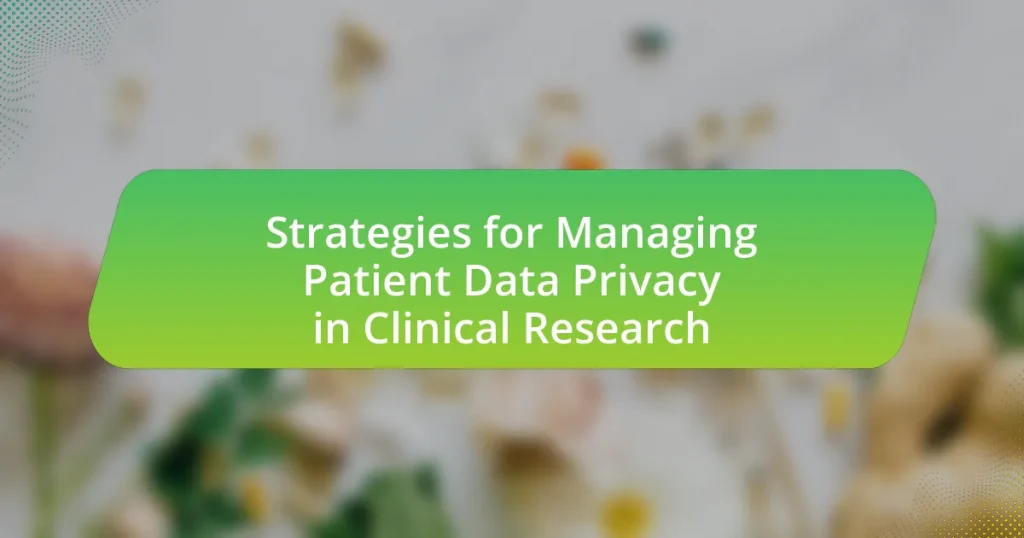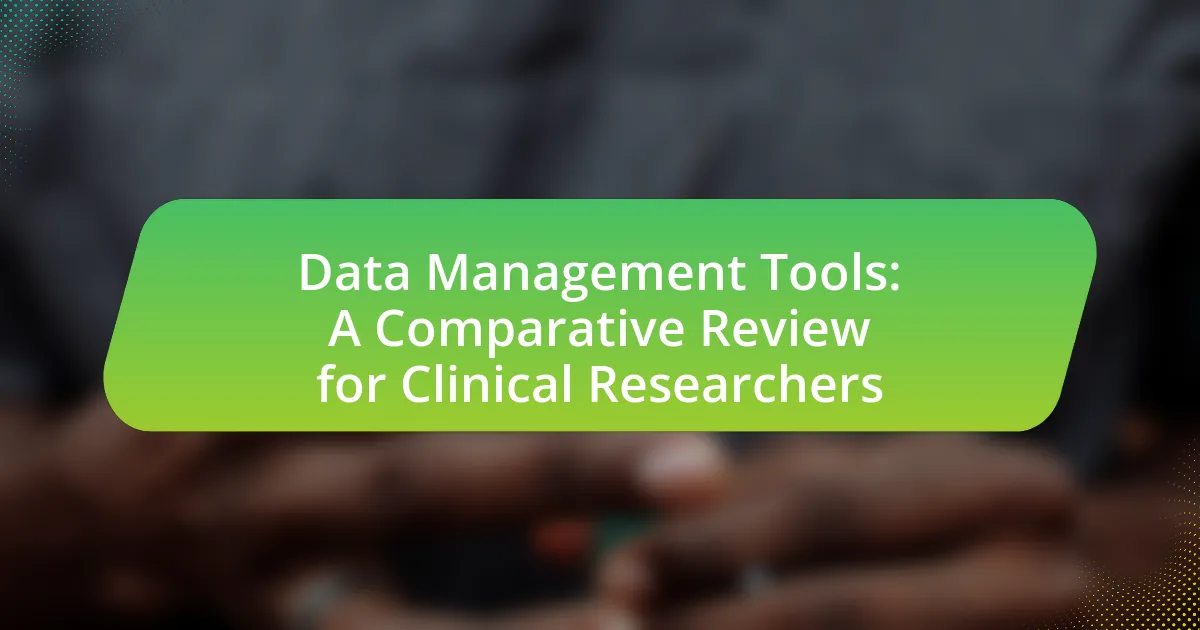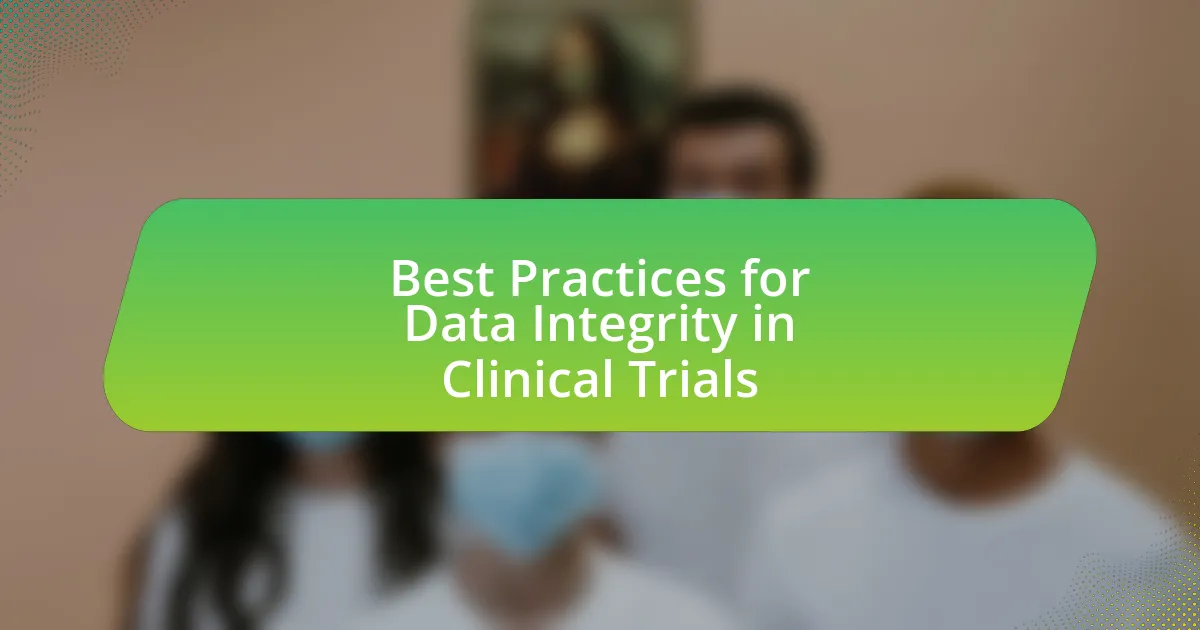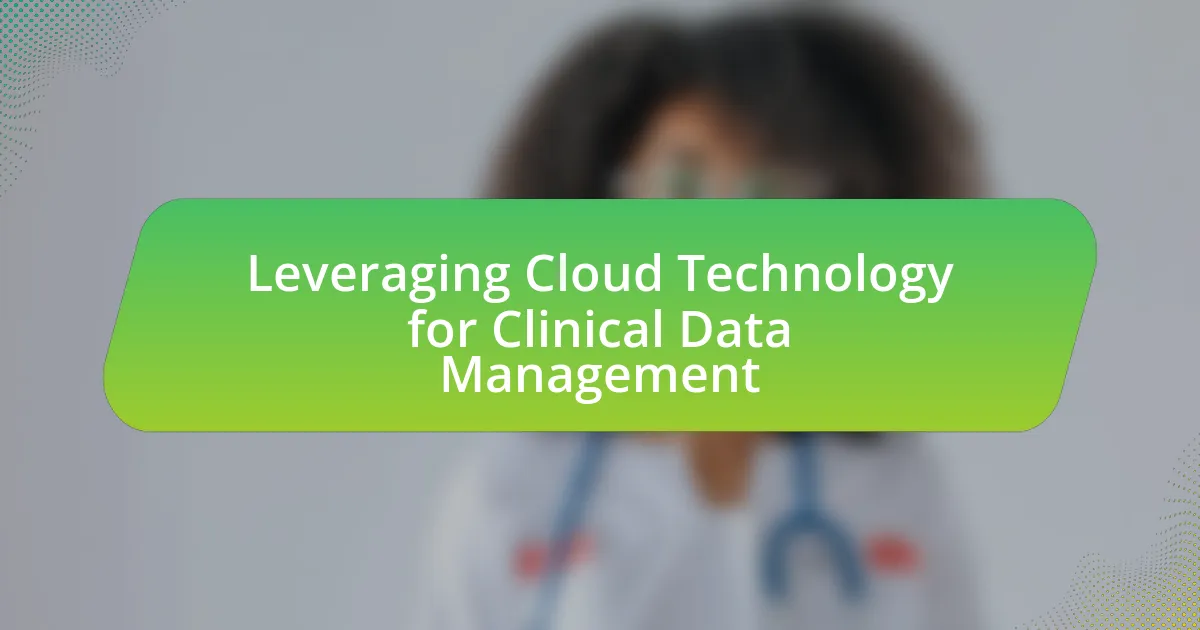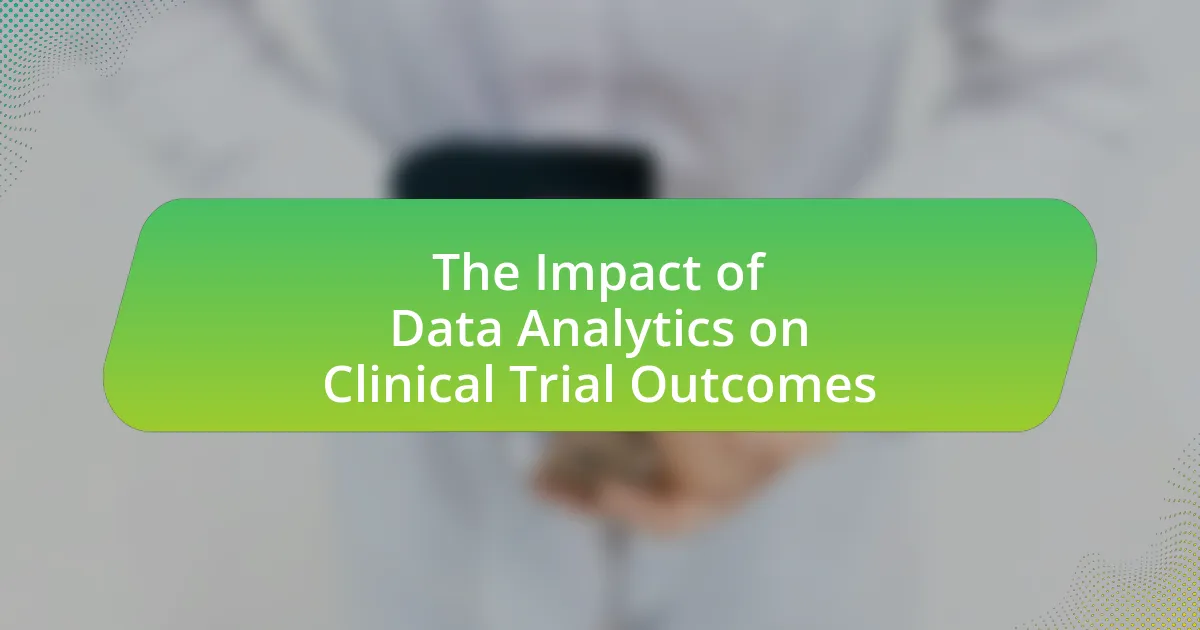The article focuses on strategies for managing patient data privacy in clinical research, emphasizing the importance of robust data encryption, informed consent, and de-identification techniques. It outlines how regulations such as HIPAA and GDPR shape these strategies, ensuring compliance and fostering patient trust. Key topics include the role of informed consent, technological solutions for data protection, and best practices for data handling and access control. Additionally, the article addresses challenges in obtaining informed consent, the impact of ethical considerations, and practical tips for enhancing data privacy in research settings.
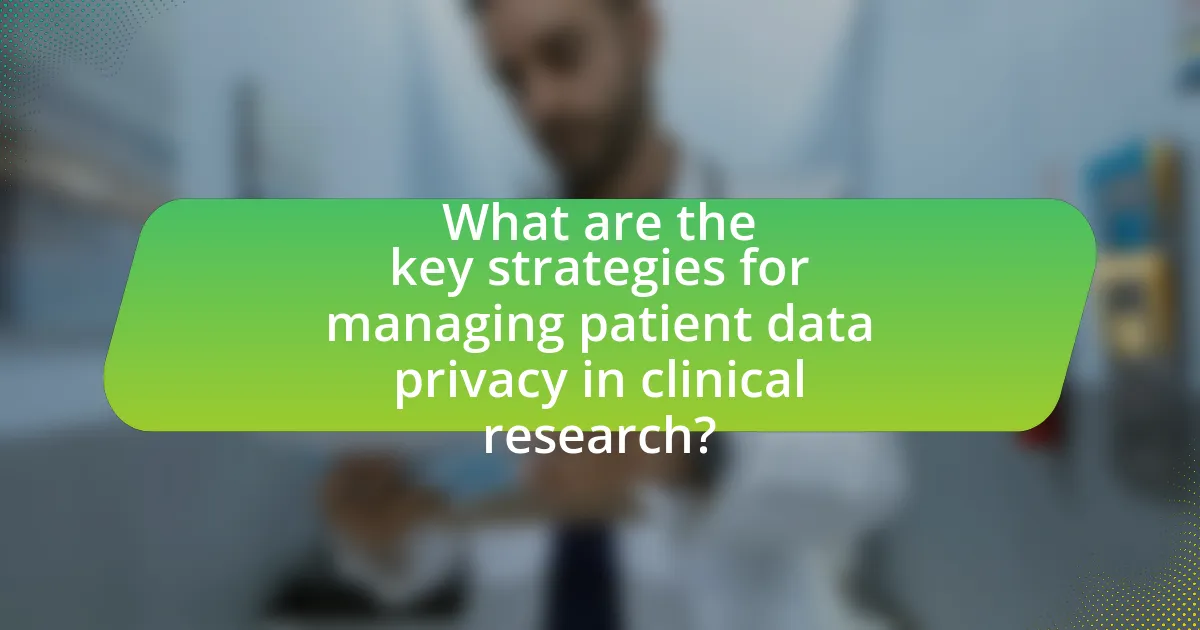
What are the key strategies for managing patient data privacy in clinical research?
Key strategies for managing patient data privacy in clinical research include implementing robust data encryption, ensuring informed consent, and utilizing de-identification techniques. Data encryption protects sensitive information from unauthorized access, while informed consent ensures that patients understand how their data will be used. De-identification techniques, such as removing personally identifiable information, further safeguard patient identities. These strategies are essential for compliance with regulations like HIPAA, which mandates the protection of patient information in healthcare settings.
How do regulations influence patient data privacy strategies?
Regulations significantly shape patient data privacy strategies by establishing legal frameworks that healthcare organizations must follow to protect sensitive information. For instance, the Health Insurance Portability and Accountability Act (HIPAA) in the United States mandates strict guidelines for the handling of patient data, compelling organizations to implement robust security measures and privacy policies. Compliance with such regulations not only ensures legal adherence but also fosters trust among patients, as they are more likely to share their information when they know it is protected by law. Additionally, regulations often require regular audits and risk assessments, which further influence the development and refinement of privacy strategies within clinical research settings.
What are the main regulations governing patient data privacy?
The main regulations governing patient data privacy include the Health Insurance Portability and Accountability Act (HIPAA) in the United States, the General Data Protection Regulation (GDPR) in the European Union, and the Health Information Technology for Economic and Clinical Health (HITECH) Act. HIPAA establishes national standards for the protection of health information, requiring healthcare providers to implement safeguards to ensure patient confidentiality. GDPR provides comprehensive data protection rights for individuals, emphasizing consent and the right to access personal data. HITECH strengthens HIPAA’s privacy and security protections, particularly in the context of electronic health records. These regulations collectively ensure that patient data is handled with care and respect, safeguarding individual privacy rights.
How do these regulations impact clinical research practices?
Regulations significantly impact clinical research practices by enforcing stringent guidelines for patient data privacy and ethical conduct. These regulations, such as the Health Insurance Portability and Accountability Act (HIPAA) in the United States, mandate that researchers implement robust data protection measures, ensuring that patient information is securely handled and shared only with authorized personnel. Compliance with these regulations often requires clinical research organizations to invest in advanced data security technologies and training programs for staff, thereby increasing operational costs. Additionally, these regulations necessitate the establishment of clear protocols for obtaining informed consent from participants, which can influence study design and recruitment strategies. Overall, adherence to regulations shapes the framework within which clinical research is conducted, promoting ethical standards while potentially complicating the research process.
What role does informed consent play in data privacy?
Informed consent is crucial in data privacy as it ensures that individuals understand and agree to how their personal data will be collected, used, and shared. This process empowers patients by providing them with the necessary information about the implications of their data being used in clinical research, thereby fostering trust and transparency. According to the Belmont Report, informed consent is a fundamental ethical principle that protects individuals from potential harm and exploitation in research settings. By obtaining informed consent, researchers comply with legal and ethical standards, ensuring that participants have the autonomy to make informed decisions regarding their personal information.
How can researchers ensure informed consent is effectively obtained?
Researchers can ensure informed consent is effectively obtained by providing clear, comprehensive information about the study, including its purpose, procedures, risks, and benefits. This transparency allows participants to make informed decisions regarding their involvement. Additionally, researchers should use plain language and avoid technical jargon to enhance understanding. Studies indicate that participants are more likely to give informed consent when they feel adequately informed and their questions are addressed (Fisher et al., 2018, “Informed Consent in Research: A Review of the Literature,” Journal of Medical Ethics). Furthermore, obtaining consent should be an ongoing process, allowing participants to withdraw at any time without penalty, reinforcing their autonomy and trust in the research process.
What are the challenges in obtaining informed consent for data privacy?
Obtaining informed consent for data privacy presents several challenges, primarily due to complexities in understanding legal language and the evolving nature of data usage. Participants often struggle to comprehend the implications of consent forms, which can be laden with technical jargon and lengthy explanations. Research indicates that approximately 70% of patients do not fully understand consent documents, leading to potential misinformed decisions regarding their data. Additionally, the rapid advancement of technology complicates the consent process, as individuals may not be aware of how their data will be used in the future, creating uncertainty and reluctance to consent. Furthermore, ethical considerations arise when balancing the need for data collection in clinical research with the individual’s right to privacy, making it difficult to achieve truly informed consent.
What technological solutions are available for protecting patient data?
Technological solutions available for protecting patient data include encryption, access controls, secure cloud storage, and data anonymization. Encryption secures data by converting it into a coded format, making it unreadable without the correct decryption key. Access controls limit who can view or modify patient data, ensuring that only authorized personnel have access. Secure cloud storage provides a safe environment for storing data with built-in security measures, while data anonymization removes personally identifiable information, reducing the risk of data breaches. These solutions are essential in maintaining patient confidentiality and complying with regulations such as HIPAA, which mandates stringent data protection standards in healthcare.
How do encryption and anonymization techniques work?
Encryption techniques work by converting data into a coded format that can only be read by authorized users who possess the correct decryption key. This process uses algorithms, such as AES (Advanced Encryption Standard), to transform plaintext into ciphertext, ensuring that even if data is intercepted, it remains unreadable without the key. Anonymization techniques, on the other hand, involve removing or altering personally identifiable information from datasets so that individuals cannot be readily identified. This can be achieved through methods like data masking or aggregation, which protect individual identities while allowing for data analysis. Both techniques are essential in clinical research to safeguard patient privacy and comply with regulations like HIPAA, which mandates the protection of sensitive health information.
What are the benefits of using secure data storage solutions?
Secure data storage solutions provide enhanced protection for sensitive information, ensuring confidentiality, integrity, and availability of data. These solutions utilize encryption, access controls, and regular backups to safeguard against unauthorized access and data breaches. For instance, a study by the Ponemon Institute in 2021 reported that organizations with robust data security measures experienced 50% fewer data breaches compared to those without. Additionally, secure storage solutions comply with regulations such as HIPAA, which mandates the protection of patient information, thereby reducing legal risks and enhancing trust among patients in clinical research settings.
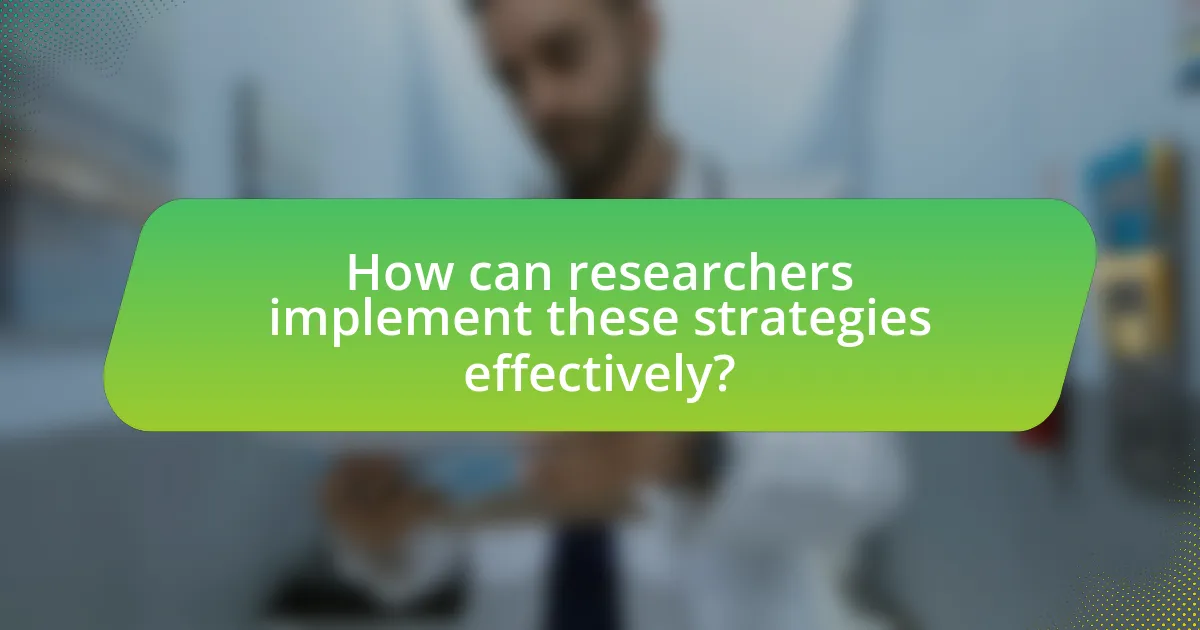
How can researchers implement these strategies effectively?
Researchers can implement strategies for managing patient data privacy effectively by adopting robust data encryption methods, ensuring compliance with regulations like HIPAA, and conducting regular training for staff on privacy protocols. Data encryption protects sensitive information from unauthorized access, while adherence to regulations ensures that researchers meet legal standards for data handling. Regular training reinforces the importance of privacy and equips staff with the necessary skills to manage data responsibly. Studies indicate that organizations employing comprehensive training programs see a significant reduction in data breaches, highlighting the effectiveness of these strategies in safeguarding patient information.
What training is necessary for staff involved in data management?
Staff involved in data management require training in data privacy regulations, data handling best practices, and data security protocols. This training ensures compliance with laws such as HIPAA, which mandates the protection of patient information, and equips staff with the skills to manage sensitive data responsibly. Additionally, training should cover the use of data management software and tools, emphasizing the importance of maintaining data integrity and confidentiality. Regular updates and refresher courses are also necessary to keep staff informed about evolving regulations and technologies in data management.
How can training programs be designed to enhance data privacy awareness?
Training programs can be designed to enhance data privacy awareness by incorporating interactive learning modules that focus on real-world scenarios and case studies relevant to data privacy in clinical research. These programs should include specific examples of data breaches and their consequences, emphasizing the importance of compliance with regulations such as HIPAA. Research indicates that experiential learning, such as role-playing and simulations, significantly improves retention of privacy practices among participants. For instance, a study published in the Journal of Medical Internet Research found that interactive training increased knowledge retention by 60% compared to traditional lecture-based methods. Additionally, regular assessments and feedback mechanisms can reinforce learning and ensure that participants understand the critical aspects of data privacy.
What ongoing education is required to keep staff updated on data privacy?
Ongoing education required to keep staff updated on data privacy includes regular training sessions on current regulations, such as the General Data Protection Regulation (GDPR) and the Health Insurance Portability and Accountability Act (HIPAA). These training sessions should be conducted at least annually to ensure compliance and awareness of evolving data privacy laws. Additionally, organizations should provide updates on emerging threats and best practices for data protection, which can be reinforced through workshops, e-learning modules, and access to relevant resources. Research indicates that organizations with continuous training programs experience a 50% reduction in data breaches, highlighting the effectiveness of ongoing education in maintaining data privacy standards.
What best practices should be followed in data handling?
Best practices in data handling include ensuring data confidentiality, integrity, and availability. To maintain confidentiality, researchers should anonymize or pseudonymize patient data to protect personal identifiers. Integrity can be upheld by implementing data validation checks and regular audits to prevent unauthorized alterations. Availability is enhanced through secure data storage solutions and regular backups to prevent data loss. According to the Health Insurance Portability and Accountability Act (HIPAA), these practices are essential for safeguarding patient information in clinical research, ensuring compliance with legal standards and ethical obligations.
How can data access be controlled to enhance privacy?
Data access can be controlled to enhance privacy by implementing strict access controls and data encryption measures. Access controls, such as role-based access and user authentication, ensure that only authorized personnel can view or manipulate sensitive patient data. For instance, the Health Insurance Portability and Accountability Act (HIPAA) mandates that healthcare organizations limit access to patient information based on job responsibilities, thereby minimizing exposure to unauthorized users. Additionally, data encryption protects information both at rest and in transit, making it unreadable to unauthorized parties. According to a 2020 report by the Ponemon Institute, organizations that employ encryption experience 50% fewer data breaches, highlighting the effectiveness of these strategies in safeguarding patient privacy.
What protocols should be established for data sharing among researchers?
Protocols for data sharing among researchers should include clear guidelines on data anonymization, consent management, and secure data transfer methods. Anonymization ensures that personal identifiers are removed or altered to protect patient privacy, which is essential in compliance with regulations like HIPAA. Consent management protocols must outline how researchers obtain and document patient consent for data use, ensuring transparency and ethical standards. Secure data transfer methods, such as encrypted file sharing and secure access controls, are critical to prevent unauthorized access and data breaches. These protocols collectively enhance trust and collaboration among researchers while safeguarding patient privacy in clinical research.
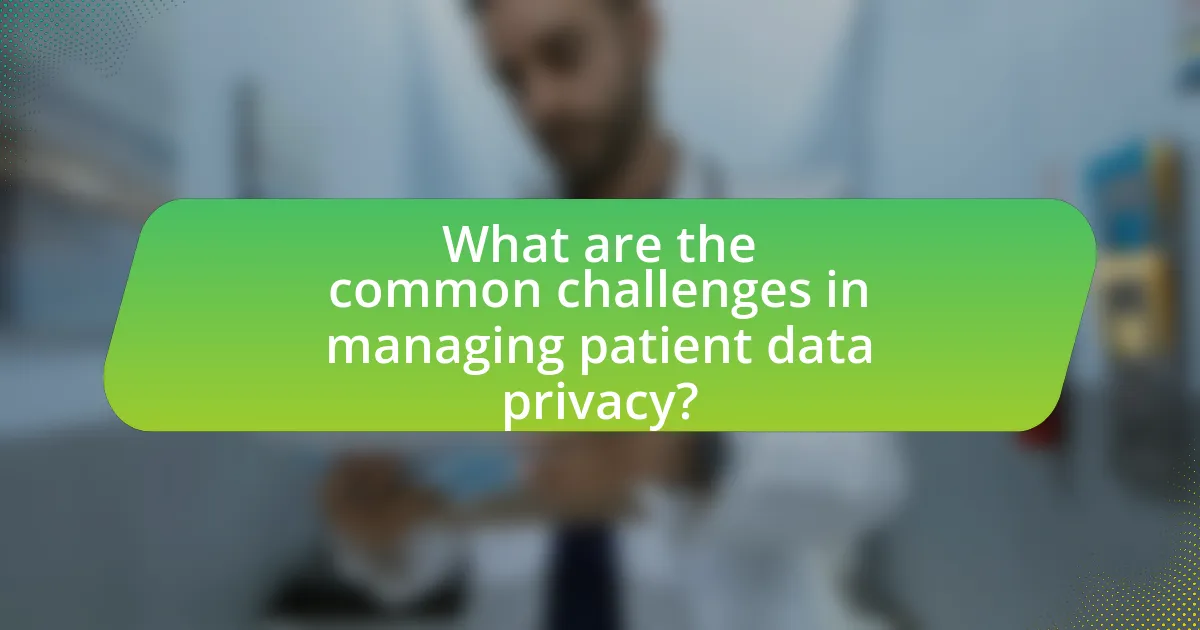
What are the common challenges in managing patient data privacy?
Common challenges in managing patient data privacy include ensuring compliance with regulations, safeguarding against data breaches, and maintaining patient trust. Compliance with regulations such as HIPAA requires healthcare organizations to implement strict data handling protocols, which can be complex and resource-intensive. Data breaches pose significant risks, as they can lead to unauthorized access to sensitive information; for instance, the 2021 data breach affecting over 3 million patients highlighted vulnerabilities in data security practices. Additionally, maintaining patient trust is crucial, as patients are more likely to share information when they believe their data is secure; studies show that 70% of patients are concerned about their data privacy, impacting their willingness to participate in clinical research.
How can researchers address potential data breaches?
Researchers can address potential data breaches by implementing robust cybersecurity measures, including encryption, access controls, and regular security audits. These strategies help protect sensitive patient data from unauthorized access and ensure compliance with regulations such as HIPAA. For instance, a study published in the Journal of Medical Internet Research found that organizations employing encryption and multi-factor authentication significantly reduced the risk of data breaches. By proactively assessing vulnerabilities and training staff on data protection protocols, researchers can further mitigate risks associated with data breaches in clinical research.
What steps should be taken immediately after a data breach occurs?
Immediately after a data breach occurs, organizations should contain the breach to prevent further unauthorized access. This involves isolating affected systems and disabling compromised accounts. Next, organizations must assess the breach’s scope by identifying what data was accessed or stolen, which is crucial for understanding the impact on patient privacy. Following this, notifying affected individuals and relevant authorities, such as regulatory bodies, is essential to comply with legal obligations and maintain transparency. Additionally, organizations should conduct a thorough investigation to determine the breach’s cause and implement measures to prevent future incidents. According to the Health Insurance Portability and Accountability Act (HIPAA), timely notification is required to protect patient information and uphold trust in clinical research practices.
How can researchers prevent future data breaches?
Researchers can prevent future data breaches by implementing robust data encryption and access controls. Data encryption ensures that sensitive information is unreadable to unauthorized users, while access controls limit data access to only those individuals who require it for their work. According to a report by the Ponemon Institute, organizations that employ encryption experience 50% fewer data breaches compared to those that do not. Additionally, regular training on data privacy and security protocols for all staff involved in clinical research can significantly reduce the risk of human error, which is a leading cause of data breaches.
What ethical considerations must be taken into account?
Ethical considerations in managing patient data privacy in clinical research include informed consent, confidentiality, and data security. Informed consent requires that participants understand how their data will be used and the potential risks involved, ensuring autonomy and respect for individuals. Confidentiality mandates that personal information is protected from unauthorized access, which is crucial for maintaining trust between researchers and participants. Data security involves implementing robust measures to safeguard data against breaches, aligning with legal frameworks such as the Health Insurance Portability and Accountability Act (HIPAA) in the United States, which sets standards for protecting sensitive patient information. These considerations are essential to uphold ethical standards in clinical research and protect participants’ rights.
How do ethical dilemmas affect patient data privacy in research?
Ethical dilemmas significantly impact patient data privacy in research by creating conflicts between the need for data sharing and the obligation to protect individual privacy. Researchers often face situations where the pursuit of scientific knowledge may compromise the confidentiality of patient information, leading to potential breaches of trust and legal repercussions. For instance, the Health Insurance Portability and Accountability Act (HIPAA) mandates strict guidelines on patient data handling, yet researchers may feel pressured to share data for broader analysis, which can conflict with these regulations. This tension highlights the necessity for robust ethical frameworks and protocols to ensure that patient privacy is maintained while still allowing for valuable research outcomes.
What frameworks can guide ethical decision-making in data privacy?
The frameworks that can guide ethical decision-making in data privacy include the Fair Information Practices (FIPs), the General Data Protection Regulation (GDPR), and the Ethical Guidelines for Data Sharing in Health Research. FIPs provide a foundational set of principles for handling personal data, emphasizing transparency, consent, and accountability. The GDPR establishes stringent requirements for data protection and privacy, mandating that organizations implement measures to safeguard personal data and respect individuals’ rights. The Ethical Guidelines for Data Sharing in Health Research offer specific recommendations for researchers to ensure ethical practices when sharing patient data, focusing on informed consent and the minimization of harm. These frameworks collectively support ethical decision-making by providing clear standards and guidelines for data privacy in clinical research contexts.
What practical tips can enhance patient data privacy in clinical research?
Implementing strong encryption methods for data storage and transmission significantly enhances patient data privacy in clinical research. Encryption protects sensitive information from unauthorized access, ensuring that even if data is intercepted, it remains unreadable without the proper decryption keys. According to a study published in the Journal of Medical Internet Research, encryption can reduce the risk of data breaches by up to 90%. Additionally, employing strict access controls, such as role-based access and multi-factor authentication, further secures patient data by limiting who can view or manipulate sensitive information. Regular training for research staff on data privacy regulations, such as HIPAA, also reinforces the importance of safeguarding patient information, thereby reducing the likelihood of accidental disclosures.
